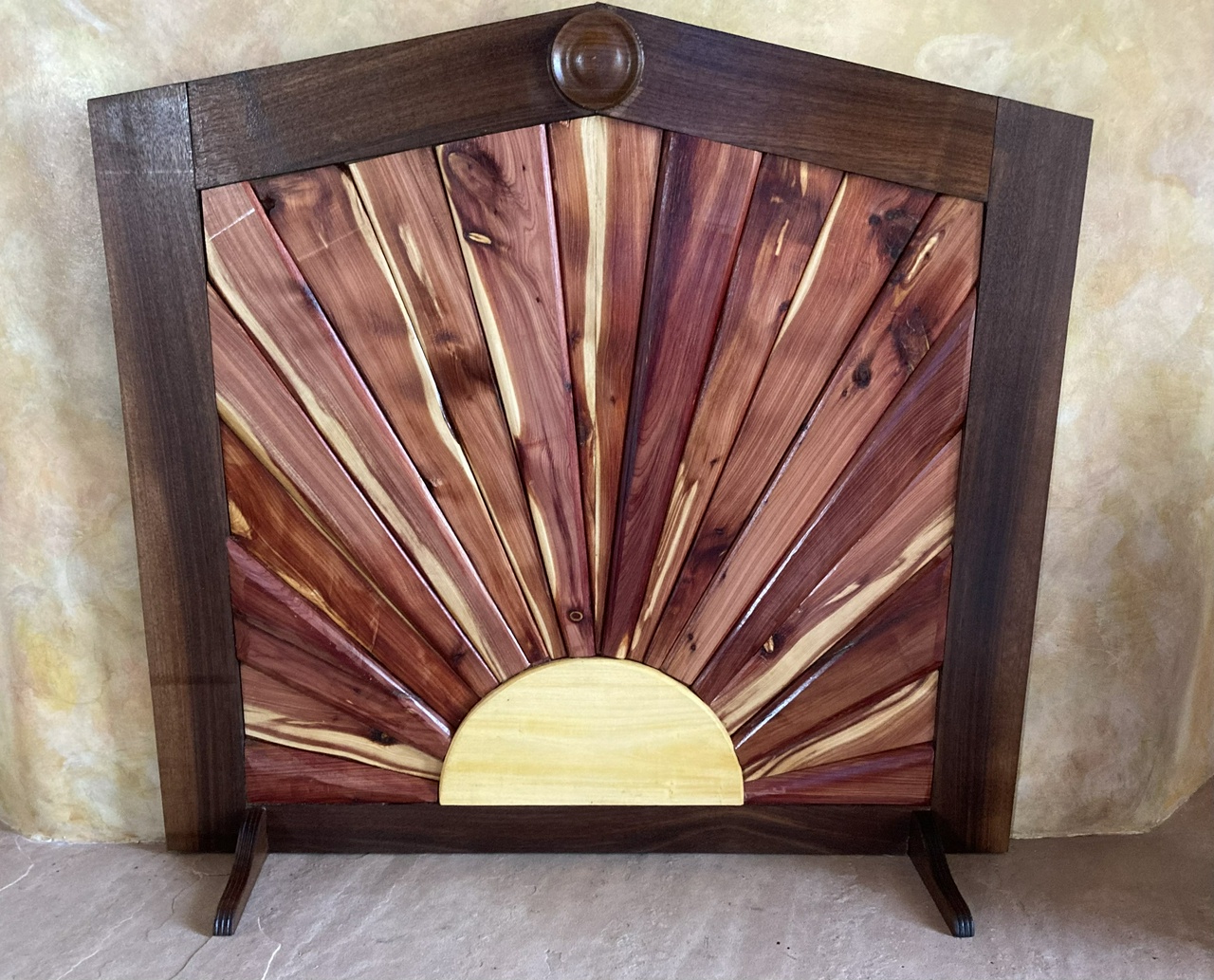Screen for our Fireplace

I built a screen for our fireplace recently, and am fairly happy with the result. The screen is for times when we’re not using the fireplace, since it looks dirty, and when the wind gusts, sometimes the damper blows open, and then we get a cold wind into the living room. This also greatly reduces the noise from wind blowing across the top of the chimney.
Two years ago, we got the front of our fireplace painted by a local artist. It’s a very nice result, but especially with that fancy paint-job, we wanted something that would look better than the fire-stained firebox.

The screen has a few features that are unique.
The hearth sits a couple inches above the floor of the firebox, as is typical. This provides a lip which I use to keep the bottom of the screen from sliding forward.

I cut a lip and curved edges on a board to sit on the lip of the hearth, and then built the frame up from there.

The frame is walnut, and around the back edges of it, I’ve put a three-layer-thick roll of felt, which can lean against the painted front of the fireplace without damaging it. The felt is simply stapled in place, first the innermost layer, then the entire roll is stapled right next to the MDF backer, which should prevent the staples from damaging the paint on the fireplace.

The center of the frame is filled with a piece of MDF, which gave me a support for the juniper “rays” and the citrus-wood “sun.” They are simply glued to the MDF backer.

The juniper rays are all of different thicknesses. Rather than mill them all down to the same thickness, I intentionally left some of them thick so I would have more visual interest in the surface of the screen. The rays are all thinned down to roughly a quarter inch where the central sun sits, glued onto the rays.

And finally, the completed screen wanted to tip forward due to the distribution of weight in it and the uneven hearth, so I added a couple feet to the front, which I glued in place only after everything else was completed, adjusting the angle of the feet to hold the top of the screen tight against the fireplace.

The finish is tung oil, followed by a few coats of shellac (between four and nine, depending on which part of the screen), followed by three-five coats of Tried and True Varnish Oil. I thought about using a more traditional varnish, but the difficulty of keeping that dust-free in my shop convinced me to use the slower, but more friendly oil varnish.
That’s all. It was about a month from cutting the first frame section to setting the completed screen in place on the hearth, but I received the juniper from a friend almost three years ago, and have been thinking and sketching designs for most of the time since then.
Discuss... Or contact me in the fediverse @davepolaschek@writing.exchange